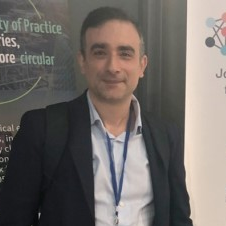Contaminants of Emerging Concern in Water: Occurrence, Fate and Removal
A special issue of Applied Sciences (ISSN 2076-3417). This special issue belongs to the section "Environmental Sciences".
Deadline for manuscript submissions: closed (25 January 2022) | Viewed by 43897
Special Issue Editors
Interests: ozonation; catalytic ozonation; wastewater treatment; advanced oxidation processes; drinking water treatment; water recovery; photocatalysis
Special Issues, Collections and Topics in MDPI journals
Interests: ozonation; catalytic ozonation; wastewater treatment; advanced oxidation processes; biofiltration; circular economy; photocatalysis
Special Issues, Collections and Topics in MDPI journals
Interests: environmental contaminants; contaminants of emerging concern; pharmaceuticals; aquatic environment; occurrence and fate; environmental risk assessment; human risk assessment
Special Issues, Collections and Topics in MDPI journals
Special Issue Information
Dear Colleagues,
With escalating population growth, intensified agricultural and industrial activity, and climate change, water scarcity will tend to increase, endangering future water resource sustainability. The need for alternative freshwater sources is leading to a new paradigm with the necessity of more reclaimed water reuse where municipal wastewater effluents must be considered as a component of water supply. There is an urgent need for protecting water ecosystems due to their interconnection with the environment and human and animal health (the One Health concept).
In this regard, special attention must be given to contaminants of emerging concern (CECs), e.g., pharmaceutical active compounds; other chemical CECs; as well as bacteria, namely, antibiotic resistant bacteria, viruses, and protozoa, due to their potential impact on public health. In fact, municipal wastewater treatment plants (MWWTPs) are a major source of these contaminants. So that a good environmental status of aquatic ecosystems may be reached, actions must be taken to improve treated-water quality. Detection techniques have been upgraded, which enables the identification and quantification of a wide range of emerging contaminants, increasing concern regarding their occurrence and fate.
Conventional wastewater treatments cannot face these compounds. Due to their refractory characteristics, suitable treatments need to be employed to avoid their presence in ecosystems and reduce their potential harm to public health.
Therefore, this Special Issue aims to focus on the occurrence and fate of CECs (either chemical or biological) in environment. Moreover, it aims to gather research regarding novel water and wastewater treatment methods for the abatement of such persistent and refractory compounds. Works related to the impact of CECs on ecosystems and public health are also welcome.
Dr. Rui C. Martins
Dr. João Gomes
Dr. André Pereira
Guest Editors
Manuscript Submission Information
Manuscripts should be submitted online at www.mdpi.com by registering and logging in to this website. Once you are registered, click here to go to the submission form. Manuscripts can be submitted until the deadline. All submissions that pass pre-check are peer-reviewed. Accepted papers will be published continuously in the journal (as soon as accepted) and will be listed together on the special issue website. Research articles, review articles as well as short communications are invited. For planned papers, a title and short abstract (about 100 words) can be sent to the Editorial Office for announcement on this website.
Submitted manuscripts should not have been published previously, nor be under consideration for publication elsewhere (except conference proceedings papers). All manuscripts are thoroughly refereed through a single-blind peer-review process. A guide for authors and other relevant information for submission of manuscripts is available on the Instructions for Authors page. Applied Sciences is an international peer-reviewed open access semimonthly journal published by MDPI.
Please visit the Instructions for Authors page before submitting a manuscript. The Article Processing Charge (APC) for publication in this open access journal is 2400 CHF (Swiss Francs). Submitted papers should be well formatted and use good English. Authors may use MDPI's English editing service prior to publication or during author revisions.
Keywords
- contaminants of emerging concern
- advanced water and wastewater treatment
- toxicity assessment
- public health
- occurrence
- fate
- risk assessment







